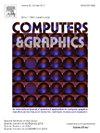Visually-supported topic modeling for understanding behavioral patterns from spatio–temporal events
IF 2.8
4区 计算机科学
Q2 COMPUTER SCIENCE, SOFTWARE ENGINEERING
引用次数: 0
Abstract
Spatio-temporal event sequences consist of activities or occurrences involving various interconnected elements in space and time. We show how topic modeling—typically used in text analysis—can be adapted to abstract and conceptualize such data. We propose an overall analytical workflow that combines computational and visual analytics methods to support some tasks, enabling the transformation of raw event data into meaningful insights. We apply our workflow to football matches as an example of important yet under-explored spatio-temporal event data. A key step in topic modeling is determining the appropriate number of topics; to address this, we introduce a visual method that organizes multiple modeling runs into a similarity-based layout, helping analysts identify patterns that balance interpretability and granularity.
We demonstrate how our workflow, which integrates visual analytics, supports five core analysis tasks: identifying common behavioral patterns, tracking their distribution across individuals or groups, observing progression at different temporal scales, comparing behavior under varied conditions, and detecting deviations from typical behavior.
Using real-world football data, we illustrate how our end-to-end process enables deeper insights into both tactical details and broader trends — from single match analyses to season wide perspectives. While our case study focuses on football, the proposed workflow is domain-agnostic and can be readily applied to other spatio-temporal event datasets, offering a flexible foundation for extracting and interpreting complex behavioral patterns.

用于从时空事件中理解行为模式的可视化支持主题建模
时空事件序列由涉及空间和时间中各种相互关联的元素的活动或事件组成。我们展示了主题建模(通常用于文本分析)如何用于抽象和概念化这些数据。我们提出了一个整体的分析工作流,它结合了计算和可视化分析方法来支持一些任务,使原始事件数据转化为有意义的见解。我们将我们的工作流程应用于足球比赛,作为一个重要但尚未开发的时空事件数据的例子。主题建模的关键步骤是确定适当的主题数量;为了解决这个问题,我们引入了一种可视化方法,该方法将多个建模运行组织到基于相似性的布局中,帮助分析人员识别平衡可解释性和粒度的模式。我们演示了集成了可视化分析的工作流如何支持五个核心分析任务:识别常见的行为模式,跟踪其在个人或群体中的分布,观察不同时间尺度的进展,比较不同条件下的行为,以及检测与典型行为的偏差。使用真实的足球数据,我们说明了我们的端到端流程如何能够更深入地了解战术细节和更广泛的趋势-从单场比赛分析到整个赛季的观点。虽然我们的案例研究主要集中在足球上,但所提出的工作流是领域不可知的,可以很容易地应用于其他时空事件数据集,为提取和解释复杂的行为模式提供了灵活的基础。
本文章由计算机程序翻译,如有差异,请以英文原文为准。
求助全文
约1分钟内获得全文
求助全文
来源期刊

Computers & Graphics-Uk
工程技术-计算机:软件工程
CiteScore
5.30
自引率
12.00%
发文量
173
审稿时长
38 days
期刊介绍:
Computers & Graphics is dedicated to disseminate information on research and applications of computer graphics (CG) techniques. The journal encourages articles on:
1. Research and applications of interactive computer graphics. We are particularly interested in novel interaction techniques and applications of CG to problem domains.
2. State-of-the-art papers on late-breaking, cutting-edge research on CG.
3. Information on innovative uses of graphics principles and technologies.
4. Tutorial papers on both teaching CG principles and innovative uses of CG in education.
 求助内容:
求助内容: 应助结果提醒方式:
应助结果提醒方式:


